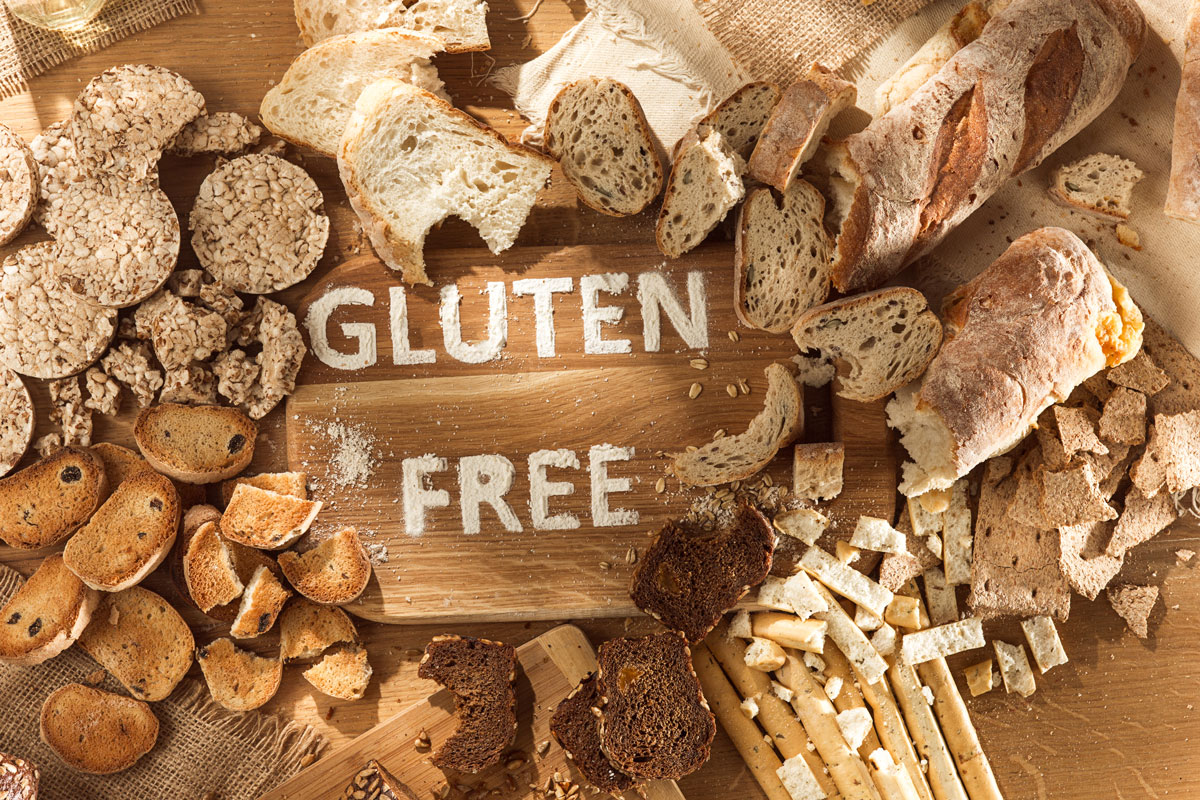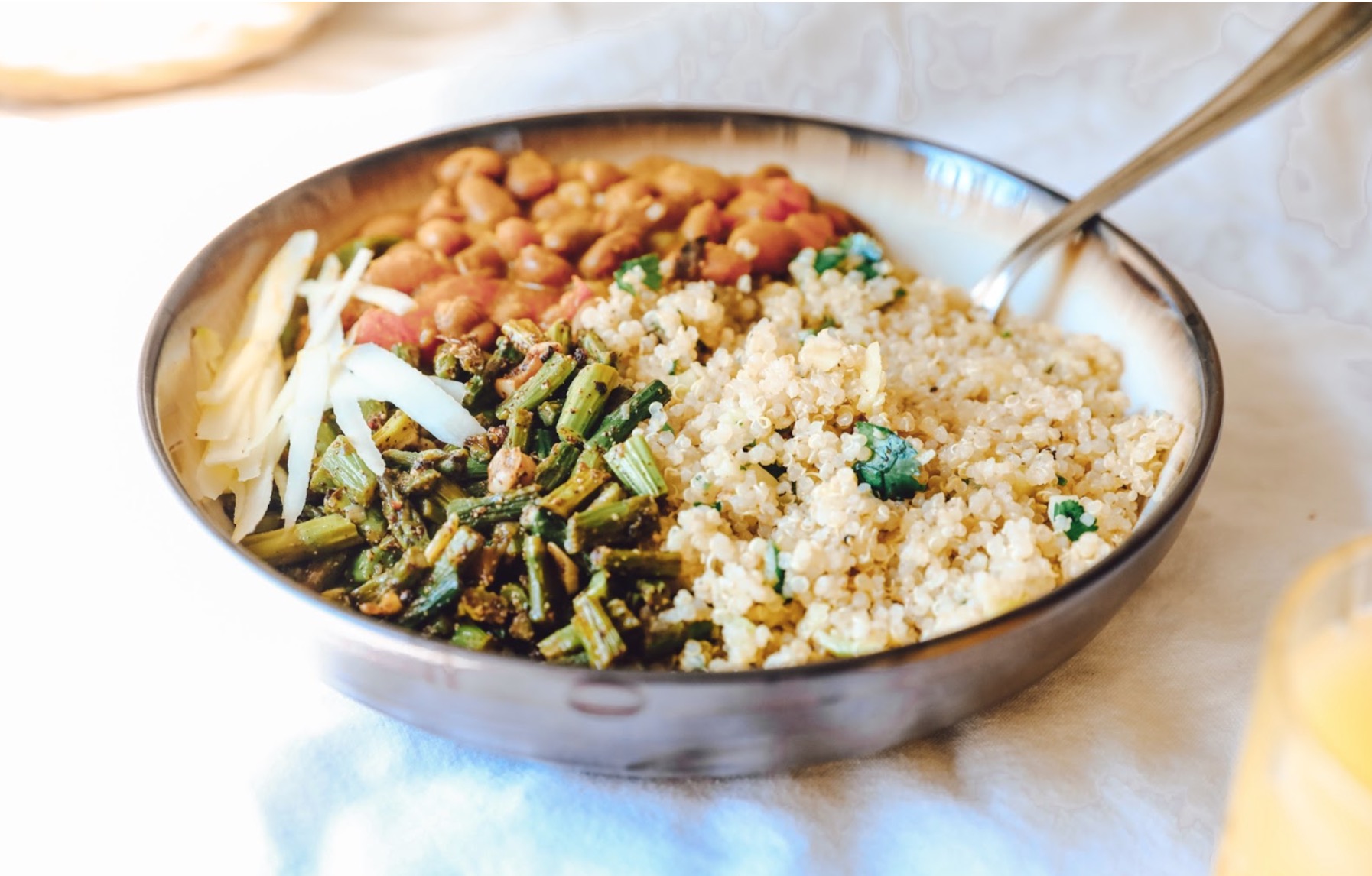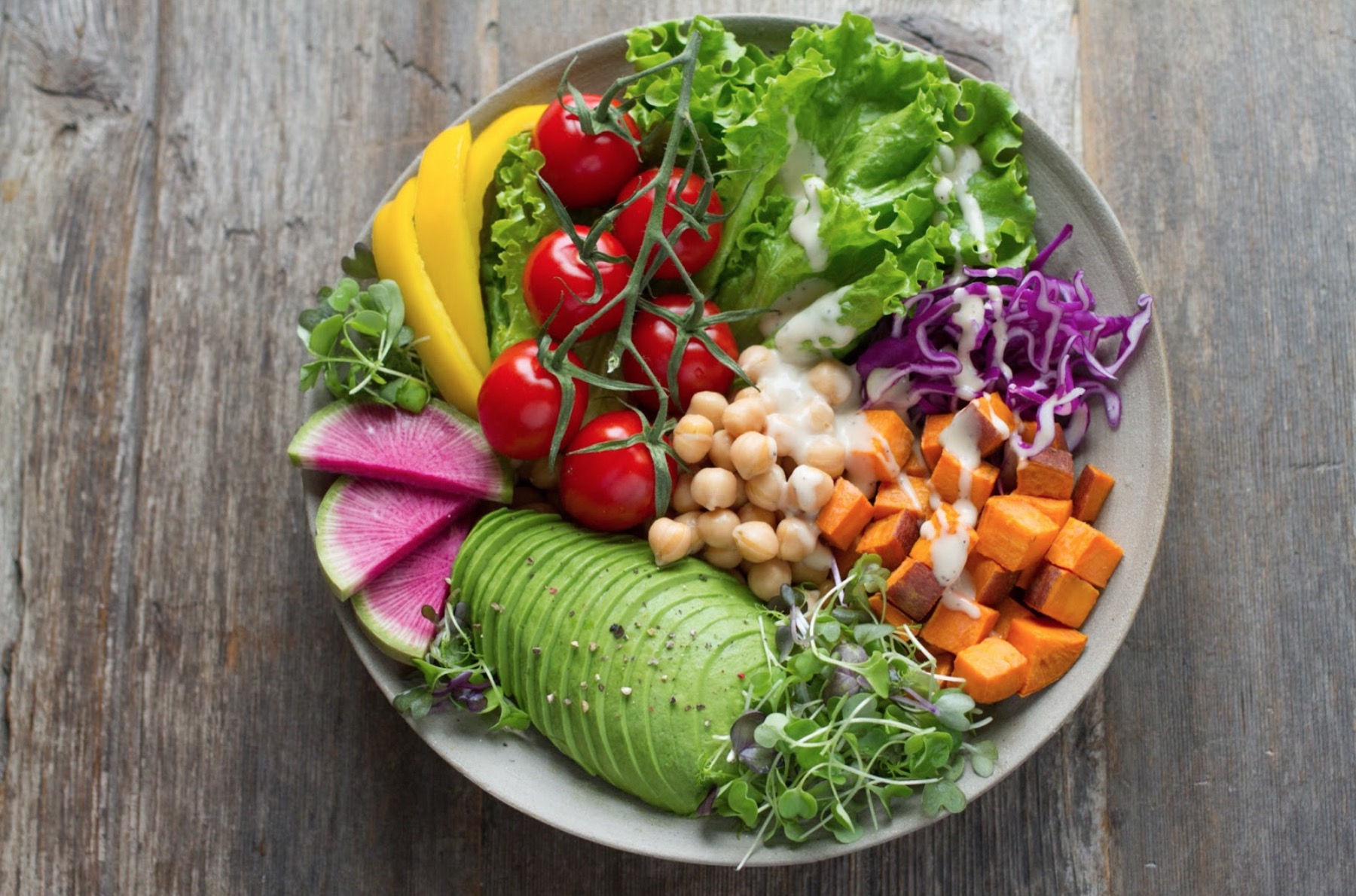Gluten is found in many foods we eat daily. You may think that it is everywhere, and it could be the point. It’s a widespread protein found in different foods we make a part of our daily diet. Is there just a lot of buzz around the gluten free diet plan for weight loss, or could it be bad for your health? This question should be properly addressed for everyone asking about the effect gluten may have on our bodies.
There are tons of articles on the Internet defending either point of view. You can find people urging that gluten is normal and that there could be nothing risky about eating foods containing this element. Others strongly defend the thought it could cause several health issues, and the consumption of gluten must be reduced.
In this article, you will learn more about the benefits and drawbacks of eating it and the side effects of adding too much gluten to your diet. If you stick to the option that protein should be highly avoided in many cases, you will also find a handy gluten-free diet plan for everyone trying to switch to a healthier eating plan. Let’s get started with the gluten-free guide!
What Is Gluten and Why You Don’t Want It to Be a Part of Your Diet?
A lot could be said about the importance or harm. But before jumping to any conclusions, one should learn more about gluten in plain words. In simple language, gluten is a type of protein being a part of different grains and wheat, in particular. It’s used to add a richer flavor and texture to the food. But it’s not a stable element since it may be added or extracted from the food you consume.
There are two main proteins found in gluten. These are glutenin and gliadin, responsible for the adverse side effects a person consuming the protein could experience. In reaction with ingredients found in many types of flour for cooking, it creates a sticky texture and helps hold everything together better. However, the stickiness and elasticity of processed food, together with its ability to increase the taste of the food, can’t be compared to the drawbacks of using gluten on a daily basis.
Where is gluten used? It’s present in different foods, the list of which you will see in the following paragraphs of the article. There are main goals the producers of food have when they add or ignore gluten.
First of all, it may give the food extra stickiness and helps bind processed ingredients. The second goal is to help processed food gain the necessary shape when it’s cooked. And the last reason why food manufacturers add it is the flavor which is more intense with the use of gluten.

Benefits and Drawbacks of Gluten Free Diet
Do you consider trying a weight loss gluten free diet plan? It might be a nice idea unless you can’t tolerate the side effects of the new diet plan for your body. Like any other diet, gluten-free eating plans are controversial and must be considered only in cases approved by the doctor. For example, if you have non celiac gluten sensitivity, this diet will make you healthier and help you feel better. If you want to try the diet without any preliminary prescription, you should consider all pros and cons your body may experience shortly.
Gluten-Free Diet Pros
What are the pros of going gluten-free for some time or switching to a constant diet? There are a couple of convincing reasons why a person may want to try a new diet:
- First of all, it’s about the health risks you avoid or reduce to a minimum. While avoiding this specific protein in your diet, you may prevent diabetes, different types of cancer, obesity, and various chronic diseases.
- Going gluten-free boosts energy and strengthens the immune system.
- A well-crafted gluten-free diet can decrease lactose intolerance, too.
Trying a gluten-free diet could be better not only for your physical but also mental health.
Gluten-Free Diet Cons
However, a gluten-free diet isn’t perfect for everyone. There are several drawbacks that may make you doubt switching to a new eating plan.
- Let’s start with the financial side of the diet. The cost of gluten-free ingredients is much higher than the normal foods you want to substitute. If you have the budget to avoid eating this protein, go for it.
- If you have no intolerance, the diet may harm your health. You should visit the doctor and take the relevant tests to check if you need to try a new eating style.
As you may see, the number of pros is much more convincing than the list of drawbacks. You may try a gluten-free diet if only you’ve been prescribed to do so or if you aren’t afraid of the side effects.
What Foods Are High in Gluten That You Should Avoid?
Being allergic to gluten is not the end of the world. There are tons of ways you may avoid foods contain a lot of gluten. To make it easier for you to stick to the strict diet, let’s first check what foods are prohibited for gluten-free diet followers.
- Baked food. This is the first thing you think about when you hear about gluten. Different doughnuts, cakes, muffins, and other baked foods are high in this protein. You may substitute it with gluten-free cookies.
- Bread is next on the list. You will find gluten in any type of bread. Tasty bagels, rolls, loaves of bread, freshly baked tortillas, and bagels contain gluten unless you may see a different statement on the package.
- Pasta is also a part of the list. If you enjoy fettuccine, spaghetti, lasagne, or any other type of pasta, you will look for an alternative.
- Chips and crackers contain gluten, too. You should be careful when eating crackers, chips, or pretzels.
- Gravy and canned soups. A lot of processed food in the form of soups and gravies is high in gluten.
- Beer is the last on the list. It might not be obvious to see the beverage on the list. The malted barley beer is mostly made of and contains gluten, as well as many other alcoholic drinks.
The list of foods containing gluten could be longer. But these options are the most common and will serve as a nice guide for beginners trying to avoid or substitute the foods. However, there are lots of gluten free options available on the market that one should check out.

Gluten Free Diet Plan
Are you ready to start your gluten-free diet plan for weight loss? There’s nothing complicated in following a menu when you have a well-developed 7 Day gluten free diet plan. You will find a handy 1500 calorie gluten free diet for beginners who try to start their way with healthy eating habits.
Day 1
| Type of Meal | What to Eat |
|---|---|
| Breakfast | Banana smoothie with a glass of water |
| Lunch | Salad with baked vegetables |
| Late Snack | Gluten-free biscuits with green tea |
| Dinner | Grilled carrots, sweet potatoes, and beans |
Day 2
| Type of Meal | What to Eat |
|---|---|
| Breakfast | Fruits, berries, and a strawberry milkshake with nonfat milk |
| Lunch | Cold tomato soup |
| Late Snack | Gluten-free biscuits with green tea |
| Dinner | Green salad with fresh fruits and fish |
Day 3
| Type of Meal | What to Eat |
|---|---|
| Breakfast | Eggs cooked in different ways with a grapefruit |
| Lunch | Any fish with baked veggies |
| Late Snack | Green tea with any gluten-free sweets |
| Dinner | Baked chicken with bouillon and veggies |
Day 4
| Type of Meal | What to Eat |
|---|---|
| Breakfast | Fruit smoothie with berries and fresh mint |
| Lunch | Veggie salad with chicken |
| Late Snack | Green tea with biscuits |
| Dinner | Chicken kebab with a vegetable soup |
Day 5
| Type of Meal | What to Eat |
|---|---|
| Breakfast | Avocado bowl with veggies and grains |
| Lunch | Chicken soup |
| Late Snack | Berry smoothie |
| Dinner | Baked salmon with fruits |
Day 6
| Type of Meal | What to Eat |
|---|---|
| Breakfast | Boiled eggs with fruits |
| Lunch | Baked meat with greek salad |
| Late Snack | Green tea with berries |
| Dinner | Brown rice with beans and baked vegetables |
Day 7
| Type of Meal | What to Eat |
|---|---|
| Breakfast | Fruit smoothie |
| Lunch | Baked mushrooms with fresh salad |
| Late Snack | Biscuits with tea |
| Dinner | Tomato soup with boiled eggs |
Tips for a Successful Gluten-Free Diet
Are you ready to start your gluten free weight loss meal plan? You have already looked at the diet options to try. Now let’s check what tips there are for beginners trying to join the gluten-free meal options.
Have a Clear Purpose for Why You Want to Start a Gluten-Free Diet
There are lots of people who are convinced by the major vibe on the web. Lots of bloggers, influencers, and regular people share their stories. However, you don’t need to follow suit, unless you have true reasons to start. Gluten isn’t critically bad for people who have no prescription to follow a diet. Hence, you should define a clear purpose to follow your diet plan.
It could be a better health condition achieved through a strict but working diet. You may want to lose weight and fight your obesity by following a gluten-free diet. When you have a clear purpose, there’s nothing that may stop you.

Watch Out for Uncommon Sources of Gluten
When you switch to a new style of eating, it could be challenging to avoid the regular food. There are tons of cases when people enjoy food high in gluten without knowing about it. Hence, your task as a beginner in a gluten-free meal diet is to check uncommon sources. It could save you from various symptoms and help you reach your goals faster. Gluten may be found in different types of foods, so check the label if you aren’t sure about the contents.
Learn How to Read Food Labels
How do you read labels? There are no secret tips to read a label. If you see any processed food in the store, you should check out the label. If the package says that the product is gluten-free, you can take it and eat it. Whether you eat meats and fish, you should still check the label. There could be gravy added to the food. And it might be high in gluten. You can also try working with a specialist. A dietitian will advise you on the first steps in your new diet.
Exercise During Gluten Free Diet
What about the exercises? This is a stable point when switching to a new diet plan. When you restrict yourself from eating regular food, you can’t feel the endorphins from the food you like. And sport is one of the sources of well-being hormones you can no longer take from food high in gluten. Simple exercises will make your new meal plan less challenging. Moreover, when trying a gluten-free diet, there are risks to gain more weight, which can be easily lost with a more intensive exercising plan.
Side Effects of Gluten Free Diet
Are there any side effects for people following the plan? In reality, a gluten free diet works for a lot of people, but it can still feature a couple of side effects. If you have Celiac Disease, it will surely help you fight the symptoms. But one should never underestimate the side effects merging from the diet.
- The lack of dietary fiber is the first side effect of the diet. When you reduce gluten in your body, it may lack the necessary amount of fibers.
- You should have a prescription from the doctor to go gluten-free because there are lots of nutrients and vitamins you might be lacking. For example, Vitamin B is missing in the gluten-free diet.
- Weight gain is another reason why some people may reconsider their decision to follow a gluten-free meal plan.
If you are ready to deal with the side effects of the gluten free diet plan for weight loss and replenish the needed vitamins in your meal plan, you should try the new meal plan.
FAQ
A lot has been said about the gluten-free diet. But there are still questions from the people following a new meal plan. Let’s answer them in plain language.
How Long after Going Gluten-Free Will I Notice a Difference?
Some people want to notice the vivid result on the next day of their gluten-free diet. But it’s not possible for your body to respond to the changes that fast. If you follow the rules and don’t break any diet norms, you will easily see the results in a couple of weeks.
How Long Does It Take for Gluten to Leave Your System?
If you switch to a gluten-free diet, you can notice a bare improvement within a week. But it will take about 3 or even 6 months for gluten to leave your body. But you don’t need to stop. Following a diet and being regular is critical when you try a gluten-free meal plan.
High Calorie Gluten Free Foods?
This is partially true that you can gain some weight when switching to a new eating style. However, it’s a manageable state and can be easily fixed with the correct choice of ingredients and foods for your gluten free diet plan for weight loss. If you exercise and choose relevant foods, you will see no difference when switching to a gluten-free diet.
